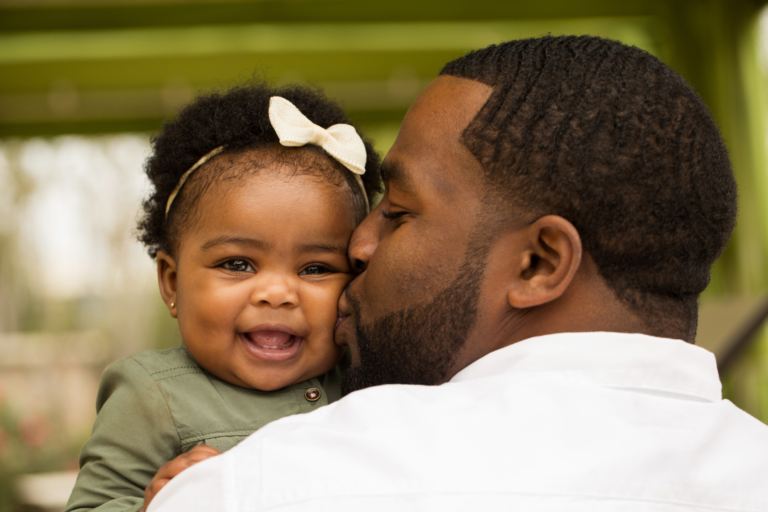Sharing these 10 baby self-soothing behaviours with you is a joy for me. Like most new mums, I struggled with sleep deprivation when my first born was an infant. I wanted what every parent dreams of – a full night’s sleep. The fact is that more than 50% of parents struggle to have a full night’s sleep until their baby’s third year. Fortunately, there is a way to beat the statistics. Evidence-based research reveals the secret to why (and how) some babies sleep through the night within the first year. Sound like a dream come true? Then keep reading…
What is baby self-soothing?
Baby self-soothing is when your baby can calm and settle themselves back to sleep again without needing to be fed to sleep, pacified or rocked. In desperation, we resort to these or other settling techniques to lull babies to sleep.
Babies who learn to self-soothe sleep for longer periods and don’t have as many night wakings. That means more sleep for you and your baby.
When do babies self-soothe?
Babies typically learn to self-soothe at around 4 – 5 months old. It’s important to remember that self-soothing is a developmental skill. Like all development, it is a process of building on skills to form new skills.
Can newborns self-soothe?
In the early days, your baby can’t voluntarily control their hands or movements enough to self-soothe. They will depend heavily on you to help settle them to sleep. That’s why your newborn might fall asleep on the breast, by rocking or patting or in the car.
Settling your new baby to sleep is normal and doesn’t have any long term consequences. Contrary to popular belief, you’re not ‘spoiling your baby’ by helping them to fall asleep. Before three months old, babies don’t develop habits or expectations so you’re not in danger of embedding bad sleep habits.
As your baby reaches 4 months though, they will develop the capacity to self-regulate or self-soothe to sleep.
4 Benefits of baby self-soothing behaviours
The obvious benefit of baby self-soothing behaviours is that your baby will learn to sleep through the night. But your baby will also use self-soothing tools to self-regulate and calm themselves when they’re overstimulated or irritable.
We all use techniques and strategies to calm ourselves or cope with stressful events. Often without even thinking about it. And for your baby, learning to self-soothe is a milestone that is as important as smiling, crawling, or walking.
Here are 4 benefits of self-soothing behaviours:
- When your baby learns to self-soothe or stay calm in the presence of stimulation, they begin to regulate their mood. This means that inexplicable crying or colic in the early days will start to subside from about 12 weeks.
- If your baby self-soothes when they come into the light sleep state, they are more likely to settle back to sleep. This means that they are linking their sleep cycles. It’s the start of sleeping for longer stretches and when appropriate, sleeping through the night.
- When your baby is skilled at self-soothing, your life will be more predictable and settled too. It is much easier to parent a baby who self-regulates than a high needs baby who needs intervention to settle and sleep.
- Long term, we know that babies who self-regulate become toddlers who manage their tantrums better. And as older children, they are less impulsive and concentrate better in school.
10 Common baby self-soothing behaviours
Baby self-soothing strategies typically involve the mouth or face and the midline of the body.
Babies also use self-soothing behaviours involving sensory stimulation. In other words, they calm or settle down with the sense of touch, pressure, vibration, or movement.
With this in mind, 10 common self-soothing behaviours include:
- Sucking hands or fist
- Sucking a dummy/pacifier
- Sucking a bottle they hold themselves
- Holding hands together at the midline in ‘prayer’ position
- Touching their ears or nose
- Sucking on a ‘doodoo’ blanky
- Rocking their head from side to side
- Humming that creates a vibration in the chest
- Rubbing their lip or hair
- Rubbing the tag of a blanket between their fingers
How to encourage baby self-soothing
Some babies learn to self-soothe with ease where another needs support to learn this new, age-appropriate skill. Here are some ways to encourage self-soothing behaviours:
- From early on, ensure that your baby can get their hands to their mouth or midline. The easiest way to do this is by swaddling their hands up towards their face or towards the chest (as opposed to swaddling their arms at their sides).
- Let your baby to derive satisfaction from self-initiated actions. For example, don’t take your baby’s hand away from their mouth if you see them sucking their hand. They are not teething, hungry or going to be a thumb sucker simply because they are self-soothing. Allow them to use this strategy to settle.
- Give your baby time to settle. The temptation, especially with our firstborn, is to jump in and soothe them as soon as we hear the first squawk. Resist the temptation and instead, let your baby (after 4-5 months of age) have a few seconds to settle themselves. This does not mean leaving your baby to cry – it simply means that you take a deep breath and listen to their communications. If they are moaning, leave them to settle. If they are really crying, respond by finding out why.
7 Things to avoid when teaching baby self-soothing behaviours
While you don’t need to worry about habits forming in the early days, habits can and do become entrenched after 5 months of age. If you consistently soothe your baby to sleep, they will be dependent on you to do so. Afterall, it is reasonable for them to learn to expect this type of soothing every time they cry or go to sleep. Habits to avoid include:
- Feeding your baby to sleep or every time they cry
- Rocking to sleep
- Driving them around in the car to get them to sleep
- Pushing them in the pram
- Lying with them to help them fall asleep
- ‘Dummy’ to sleep – popping the dummy in their mouth every time they fuss or wake
- Stroking mum’s hair or similar to get to sleep
These can seem like a quick solution for parents desperate to sleep. Holding and rocking your baby to sleep might be cherished bonding time in the early days but it becomes hard to break these habits in the long run.
That said, bear in mind that changing bad habits is only necessary for babies older than 6 months. Before 6 months, simply giving your baby the opportunity to self-soothe will make all the difference because habits are not yet firmly entrenched. After 6 months though, if habits are ruling your life you need to help your baby learn new strategies to self-soothe.
Teach your baby self-soothing behaviours in 8 days or less
Teaching your baby to self-soothe doesn’t need to be a grueling process. By following this tried and tested technique to teach your baby to self-soothe, you can start looking forward to more sleep in just over a week.
Day 1-4
Watch what your baby tends to do to settle or take note of something they like that could become an attachment object. It could be a favourite blanky or muslin, a teddy or or dummy/pacifier. For the first four days, offer this object every time your baby fusses in daylight hours. As they cry, lift the attachment object to your shoulder and then cuddle them with the object. This way, they will learn to associate the object with your comfort.
Day 5-7
As your baby develops an association of soothing with this object, you can start to help them use it at night. Wait two minutes from the time they begin to cry at night to give them the opportunity to use the new tool. After two minutes, go to them and put the object in their hands. Do this instead of feeding, rocking, or patting. This step is a tough one because in a sleep deprived state, you and your baby may resist the change. Of course, the old soothing strategy is easier but by being consistent for these four nights, you will teach your baby a new skill. Don’t leave your baby while they fuss, just be calm and consistent in teaching the new strategy.
Day 8
By day 8, your baby is ready to do it themselves. Instead of putting the object in their hands, put at least two of the objects (if not more – in the case of dummies put 5) in the cot for them to find themselves at night. When they fuss, leave them for 5 minutes and they will probably piece it together and put themselves to sleep.
Remember that some babies might take to learning self-soothing behaviours with little fuss or coersion. Others might need a full four to eight days to learn, adjust and implement this new technique. Whatever your baby needs, persevere! In the end it will be well worth it not just for the sake of sleep but also to build confidence in your ability to parent with sense.
When your little one reaches this milestone, you can be very proud of yourself. You have successfully taught your baby self-soothing behaviours – a new and important skill and the answer to sleepless nights. Not only will your household get more rest, but you and your little one can count on more settled and predictable days too.
For expert advice and access to my popular Sleep Sense online course, download Parent Sense – the all-in-one baby app that takes the guesswork out of parenting.




